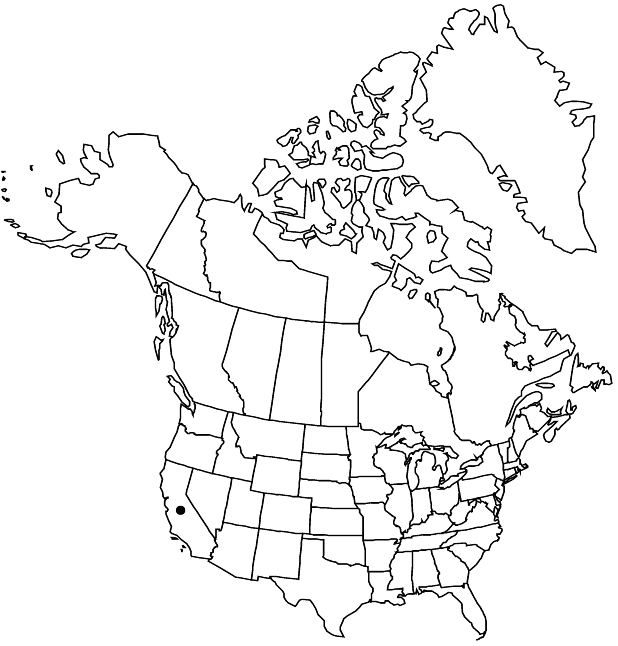Difference between revisions of "Dudleya abramsii subsp. bettinae"
Phytologia 70: 229. 1991 ,.
FNA>Volume Importer |
FNA>Volume Importer |
||
| Line 7: | Line 7: | ||
}} | }} | ||
|common_names=San Luis Obispo serpentine dudleya | |common_names=San Luis Obispo serpentine dudleya | ||
| − | |basionyms={{Treatment/ID/ | + | |basionyms={{Treatment/ID/Basionym |
|name=Dudleya bettinae | |name=Dudleya bettinae | ||
|authority=Hoover | |authority=Hoover | ||
| + | |publication_title=Leafl. W. Bot. | ||
| + | |publication_place=10: 186. 1965 | ||
}} | }} | ||
|synonyms= | |synonyms= | ||
| Line 27: | Line 29: | ||
|distribution=Calif. | |distribution=Calif. | ||
|discussion=<p>Of conservation concern.</p><!-- | |discussion=<p>Of conservation concern.</p><!-- | ||
| − | --><p>Subspecies bettinae can form clumps to 4 dm in diameter. It is known from near the coast west of San Luis Obispo and west of the range of <i></i>subsp.<i> murina</i>; it is considered fairly endangered (California Native Plant Society, http://cnps.web.aplus.net/cgi-bin/inv/inventory.cgi). R. F. Hoover (1965, 1970) listed as <i>Dudleya parva</i> what seems to be a smaller form of this subspecies, local near San Bernardo Creek and the mouth of Chorro Creek.</p> | + | --><p>Subspecies bettinae can form clumps to 4 dm in diameter. It is known from near the coast west of San Luis Obispo and west of the range of <i></i></i>subsp.<i><i> murina</i>; it is considered fairly endangered (California Native Plant Society, http://cnps.web.aplus.net/cgi-bin/inv/inventory.cgi). R. F. Hoover (1965, 1970) listed as <i>Dudleya parva</i> what seems to be a smaller form of this subspecies, local near San Bernardo Creek and the mouth of Chorro Creek.</p> |
|tables= | |tables= | ||
|references= | |references= | ||
| Line 51: | Line 53: | ||
|publication year= | |publication year= | ||
|special status= | |special status= | ||
| − | |source xml=https://jpend@bitbucket.org/aafc-mbb/fna-data-curation.git/src/ | + | |source xml=https://jpend@bitbucket.org/aafc-mbb/fna-data-curation.git/src/f6b125a955440c0872999024f038d74684f65921/coarse_grained_fna_xml/V8/V8_368.xml |
|genus=Dudleya | |genus=Dudleya | ||
|subgenus=Dudleya subg. Dudleya | |subgenus=Dudleya subg. Dudleya | ||
Revision as of 21:28, 24 September 2019
Caudices closely branched, 1–3 cm diam. Leaves: rosettes 100+; blade oblong, subterete, 2–7 × 0.3–0.7 cm. Inflorescences: floral shoots 15–25 × 0.2–0.5 cm; proximalmost leaf blades 10–20 mm; branches often 1–2, simple. Pedicels 1–4 mm. Flowers: calyx 4–6 × 4–7 mm; petals connate 1.5–2 mm, straw yellow, red-lineolate, 8–16 × 2.5–4 mm, tips erect. 2n = 34.
Phenology: Flowering early summer.
Habitat: Barren serpentine outcrops
Elevation: 0-200 m
Discussion
Of conservation concern.
Subspecies bettinae can form clumps to 4 dm in diameter. It is known from near the coast west of San Luis Obispo and west of the range of subsp. murina; it is considered fairly endangered (California Native Plant Society, http://cnps.web.aplus.net/cgi-bin/inv/inventory.cgi). R. F. Hoover (1965, 1970) listed as Dudleya parva what seems to be a smaller form of this subspecies, local near San Bernardo Creek and the mouth of Chorro Creek.
Selected References
None.
